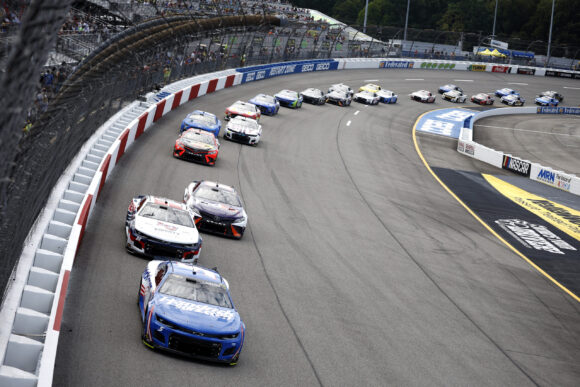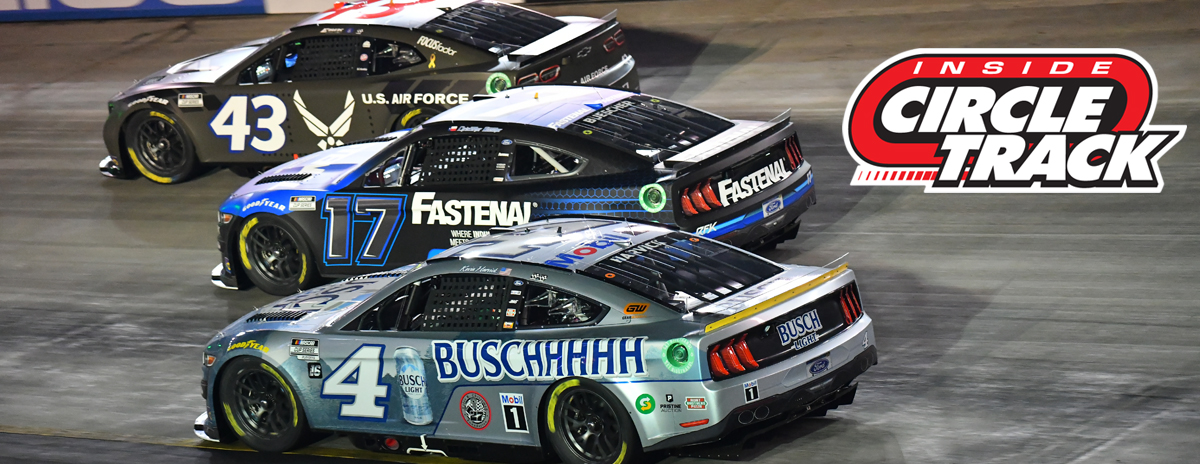
Richmond’s D-shape sets it apart from NASCAR’s other short tracks(Getty Images)
What exactly makes a racing venue a short track?
One obvious answer to that question is the size of the track. The typically accepted measurement of a short track is most often thought to be a racing facility in which a lap covers less than one-mile in length.
But another possible answer has to do with the style of racing that takes place on the track. It could be argued that short track racing features close-quarter action in a compact space that sometimes results in a little sheet metal rubbing. So even if a speedway measures less than one mile in its length, it may not be counted as a short track by those whose judgement is based on the type of racing offered.
Richmond Raceway is a track that could be considered at the center of the short track or non short track debate. It’s 3/4 of a mile measurement is good enough for some to fit it into the short track category. On the other hand, the D-shaped oval has not always raced like a traditional short track.
A comparison of the site of Sunday’s Toyota Owners 400 against the two other acknowledged short tracks on the NASCAR Cup Series seems to support the latter of the two thoughts listed above.
NASCAR introduced stage racing and the two planned cautions per race that go with it back in 2017. A look at the statistics since that date reveal how tame Richmond’s racing has become compared to the Martinsville Speedway and the Bristol Motor Speedway. Both of those tracks measure in at just barely over 1/2 mile.
Keep in mind that Richmond’s events run to a distance of 400 laps while some Martinsville and Bristol contests call for drivers to make 500 circuits.
Since 2017, Richmond has averaged 5.2 cautions per event with two of those being thrown for stage breaks. A high number of nine yellow flags waved in the spring of 2017 and a low of three were displayed in the fall of 2018. The last four races held in the capital city of Virginia have each had five cautions.
The racing at Richmond can, at times, feature long green flag runs with little passing at the front of the field and virtually no contact between cars. As a result, some might argue that Richmond does not race like a typical short track.
In comparison, Martinsville over that some time period, has averaged 9.5 yellow flags per race with a high number of 15 in both races held on the paper-clip shaped track in 2021 and a low number of four in the spring of 2018. Six of the track’s last twelve races have featured double-digit numbers of cautions.
Likewise, fans attending races in Bristol have seen an average of 9.9 cautions per race since 2017 with a high of 17 in the first race held there in the Covid-interrupted 2020 season and a low of five in the second race of that year. Four of the last 10 events on the high-banked track have had double-digit numbers of yellow flags.
Note, only the races held on the concrete surface at BMS were counted for the purpose of this piece.
Yes, Richmond comes in at less that one-mile in length. However, the track tends to race almost like an intermediate rather than a short track. Perhaps the additional quarter-mile allows for competitors to get a bit more strung out over the course of a green flag run. Or, it could be that the D-shape of the front stretch has that effect.
Granted, too many cautions can almost become as monotonous as too few cautions. Some races at Martinsville and Bristol have a tendency to leave fans wishing for at least a few green flag laps to be completed without an incident. On the other side of things, the long runs between cautions at Richmond can sometimes bring the elements of green flag pit stops and fuel strategy into play that are seldom seen at Martinsville and Bristol.
Either way, the racing at Richmond more often than not does not feel very short track-ish.
Please consider also reading:
Striking similarities as Davenport and Busch go outside their comfort zones
Richard Allen has been covering NASCAR and other forms of motorsports since 2008.
Respond to this piece on Twitter –> @RichardAllenIDR
or on Facebook –> InsideCircleTrack/Facebook
